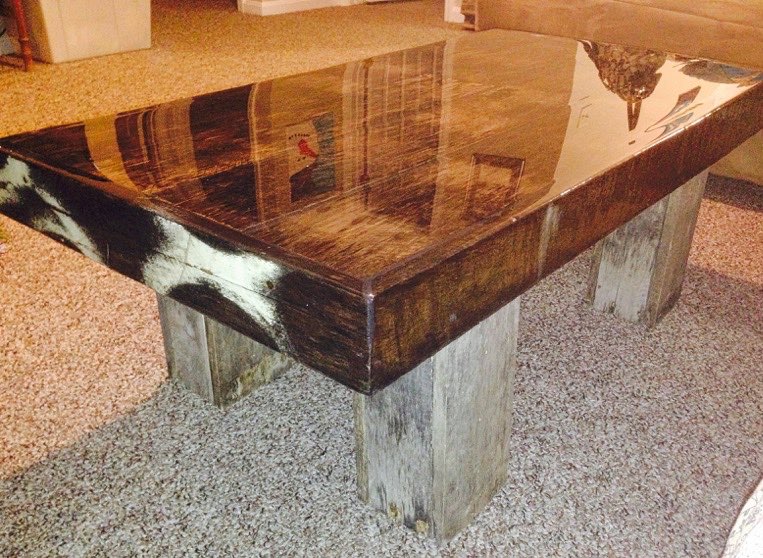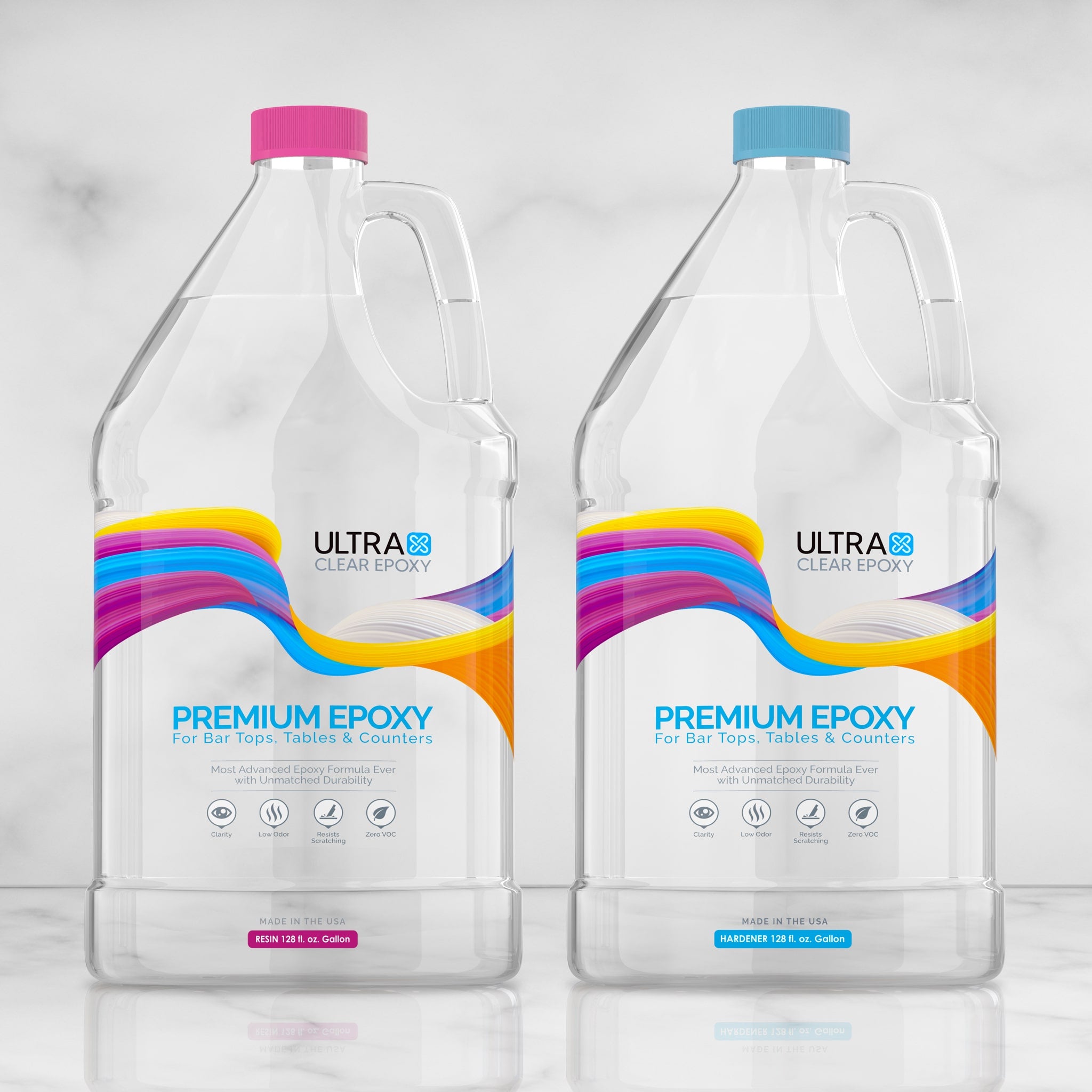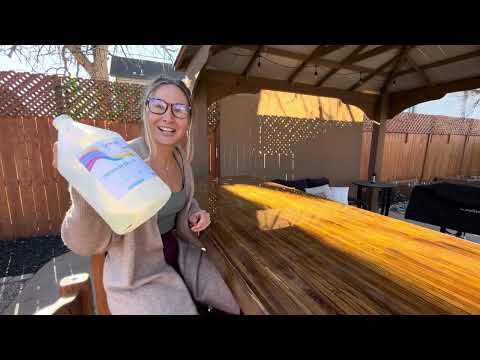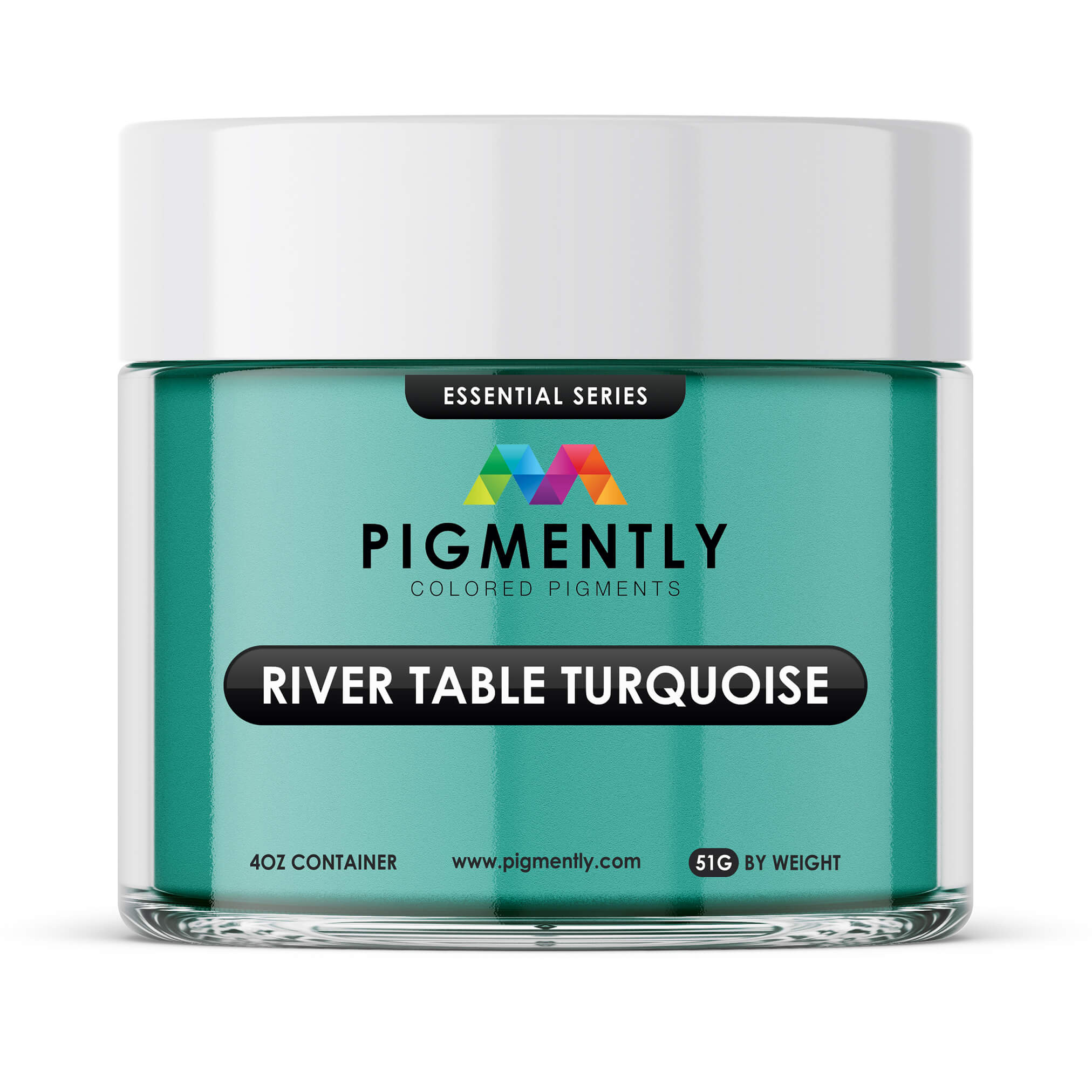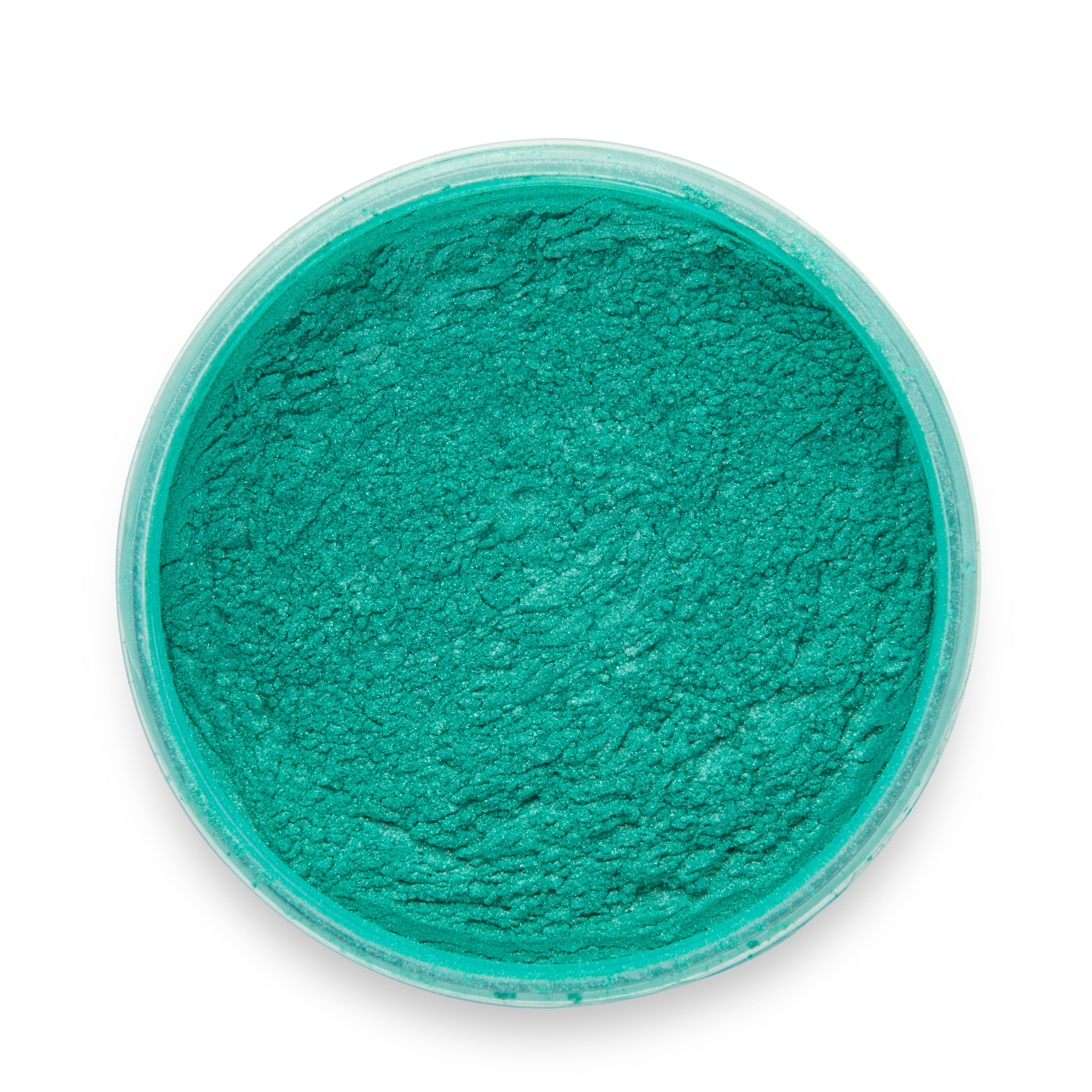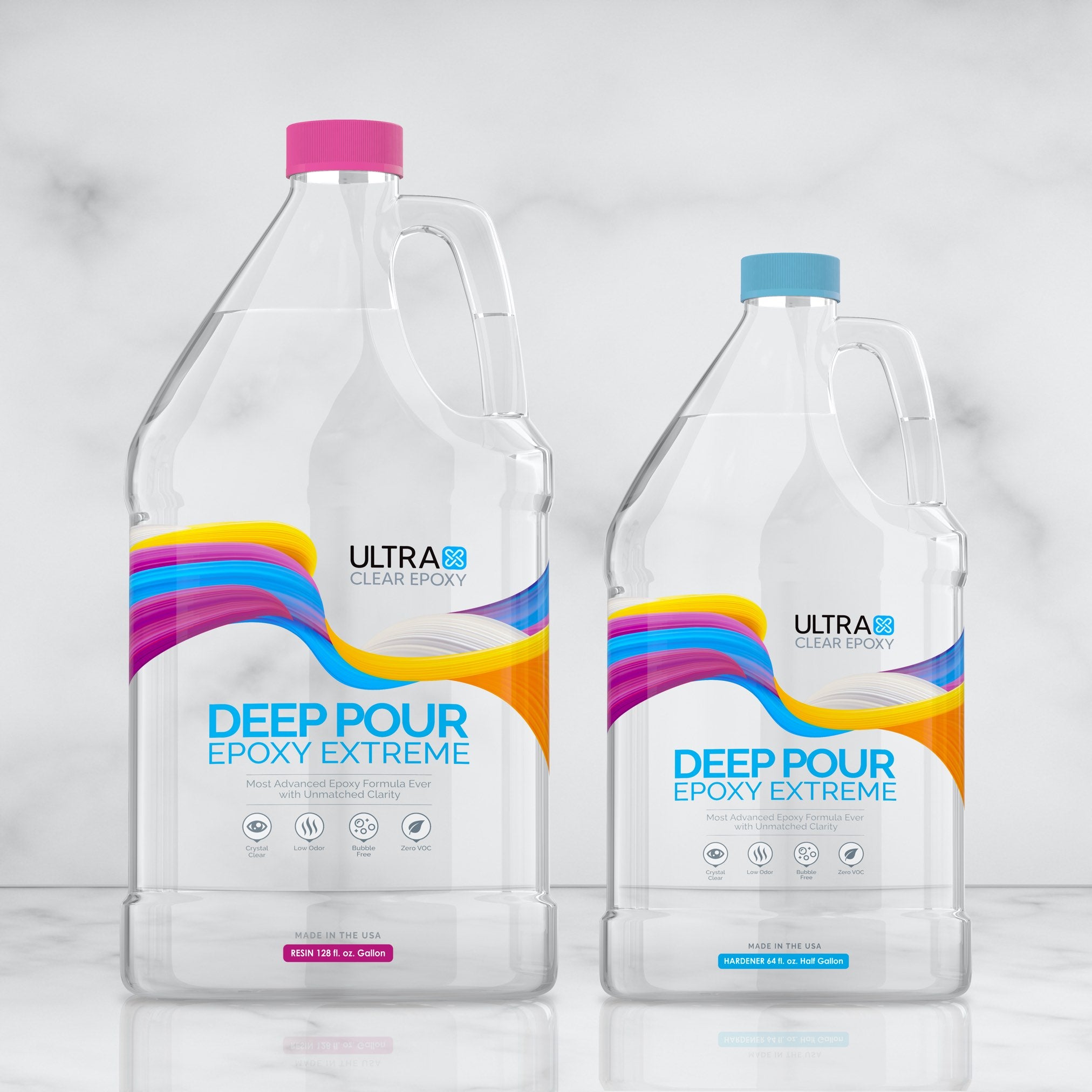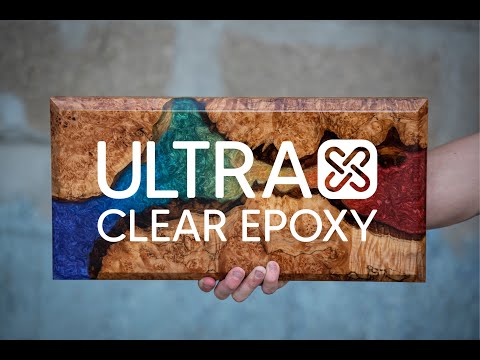If you're planning an epoxy project, you may be wondering which epoxy type is right for you. One factor that users often don't consider is the viscosity rating of different epoxy resins.
In this article, we go over the viscosity differences between our epoxies.
Viscosity of UltraClear Epoxy resins
The two most commonly used resin types are table top epoxy and deep pour epoxy. Each of them excels in different ways.
Let's start with table top epoxy.
UltraClear Table Top Epoxy: A high-viscosity epoxy standard
For table top epoxy, protection and convenience are the primary goals. It's stronger and more resilient, as well as being easy to use due to its self-leveling trait.
This epoxy is typically used on bar tops, table tops, countertops, and many other large furniture or structural projects.
Because of its low viscosity, it also pours more slowly once fully mixed with hardener. This makes it easy to control your pouring, which is good since most table top epoxy projects don't have rails or raised edges to hold it in.
Table top epoxy can be used on tiny projects as well, but since it's not a casting resin, it isn't intended to be used for deep embedments or mold filling.
For that, you'll want to use deep pour epoxy, described below.

UltraClear Deep Pour Epoxy: A low-viscosity casting resin
Deep pour epoxy primarily focuses on embedding or casting. It could be described as a low-viscosity epoxy alternative to table top epoxy. It flows more rapidly and has less cohesion, so it won't self-level to the same extent as table top epoxy.
Deep pour epoxy is often used for projects that need thick layers, whether to embed objects, for casting purposes, or to fill in reservoirs and gaps in substrate materials, such as when constructing a river table.
If your goal is something in that vein, or if you simply need a low-viscosity resin for another reason, this is the one you should choose.
UltraClear Art & Craft Epoxy: Resin for small artistic projects
Our art-and-craft epoxy is designed for smaller creative projects that tend to require extra nuance. It's slightly less viscous than table top epoxy, which allows for a little more versatility in layer depth and in how it flows to fill spaces within molds and between substrate materials.
Some examples of projects users choose this for are resin jewelry, epoxy coasters and trays, small yet intricate table tops, and gift items such as keychains and bookmarks.
Why does epoxy viscosity matter?
The viscosity of epoxy plays a major role in what the epoxy is best used for.
As mentioned above, table top epoxy is not intended for thick layers. One of the main reasons for this is its high viscosity rating.
Because resin has a naturally high cohesion, it tends to stick together (more strongly than water), and it will pool into beads rather than spread itself infinitely thin.
The high viscosity of our UltraClear Table Top Epoxy combined with its high cohesion is what allows it to self-level at a very particular 1/8 of an inch. There's a lot going on that brings it so consistently to this depth.
Attempting to pour thicker or thinner layers usually results in problems such as excessive air bubble formation, as the epoxy cannot spread out adequately to provide a thinner layer, and the high viscosity of table top epoxy makes it more likely to trap in air as it cures if poured in thick layers.
Deep pour epoxy solves these issues
Our UltraClear Deep Pour Epoxy, on the other hand, is able to spread thinner and is fine with being poured in thick layers, up to two inches at a time.
This makes the deep-layering process much faster, and in some cases is what makes high-depth projects even feasible—all due to its low viscosity rating.

Epoxy types complement each other
The most common way to make use of deep pour epoxy is to apply it as needed to a project first, filling in voids or casting molds, etc. Many people then choose to apply a topcoat of table top epoxy to any flat surfaces that are likely to experience regular or rough use over time.
This is useful because, while deep pour epoxy is still quite strong, it's not top-tier protection like table top epoxy is
For high-traffic locations, it's good to have that final, nearly impervious layer of epoxy resin to prevent impact damage and scratching, thus preserving your project for years to come.
Consistency comes with quality—don't compromise on epoxy.
Regardless of which type of epoxy resin you require for your project, it's smart to research carefully before buying an epoxy brand.
Because many resin vendors promote and sell low-quality epoxy products, many newcomers end up with project failures, and usually are told it was entirely their fault. Mistakes do happen, but sometimes it's the resin that's at fault.
Our free ebook, The Ugly Truth About Epoxy Resin: What Companies Don't Want You to Know, discusses some of the shady and surprisingly common marketing schemes prevalent in the epoxy industry. With it, we hope to teach you how to avoid these dishonest dealers and find the right resin for your projects.
Additional Resources
We hope this article has been helpful for you. Beginning a new epoxy project is an exciting endeavor.
Below, we've listed a few additional resources you may find useful:
- Our guide to coloring epoxy resin - Did you know you can infuse epoxy with color? Discover how in our guide to epoxy colorants.
- Guidelines for cleaning epoxy surfaces - Epoxy surfaces are surprisingly easy to clean. Take a look at our guidelines for more information.
- Epoxy: Proper storage, shelf life, and preventing "yellowing" - High-quality epoxy resin has a lengthy shelf life. Learn methods for storing epoxy resin, as well as how to avoid resin yellowing in this handy explainer.
Have Questions? Want Advice? We're Here to Help!
If you have any questions about epoxy resin, or if you'd like assistance in planning an epoxy project, please reach out to us at UltraClear Epoxy—our epoxy experts are ready to assist!
You can contact us via phone or email here. During business hours, you can also text chat online with one of our resin specialists by clicking the Help button at the bottom of your screen.
In our online store, you'll find a variety of useful tools and supplies, ideal for resin projects, plus our award-winning UltraClear Bar & Table Top Epoxy and our UltraClear Deep Pour Epoxy.
UltraClear Epoxy—Trusted by over 1 Million+ Happy Customers

